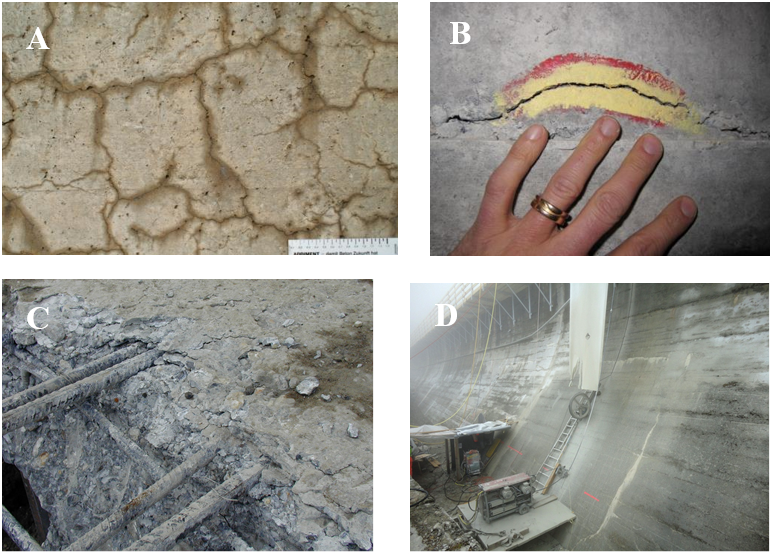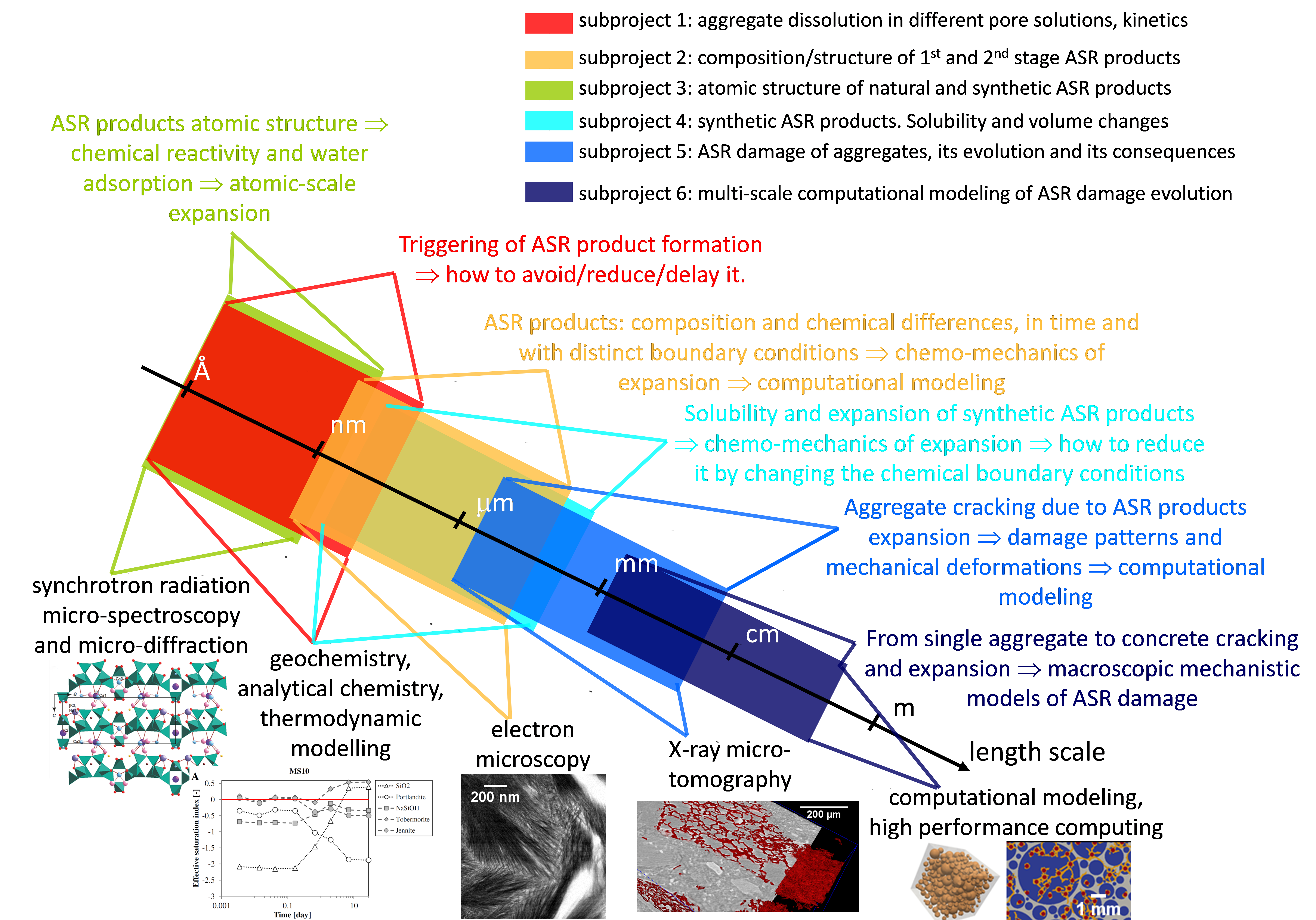Alkali-silica reaction in concrete

Alkali-silica reaction (ASR) causes cracking and with it substantial damages in concrete structures worldwide. In Switzerland, several hundreds of structures, including bridges and dams, are affected (Fig. 1), causing substantial costs due to repair or replacement. Although ASR is one of the major focal points of concrete research since the first cases were reported in the 1940's, our knowledge is still not sufficient to understand various aspects of the reaction. Due to a lack of in-depth knowledge about the mechanisms of the reaction and about how damage develops, ASR mitigation and management of affected structures is still based on a purely empirical approach. In order to improve this situation, a breakthrough in the understanding of ASR is needed. Such an ambitious goal can only be reached by using a multidisciplinary and multiscale approach that will be able to link chemical and mechanical aspects of ASR. This requires a broad range of expertise that is covered by the participating institutes. They bring together the fields of chemistry and thermodynamic modelling, structural analysis of reaction products, 2-D materials characterization, 3D X-ray tomography and mechanical modelling. In order to benefit optimally from this broad range of expertise, the proposed six subprojects are closely linked.
Project period
2017 - 2021

-
Share
